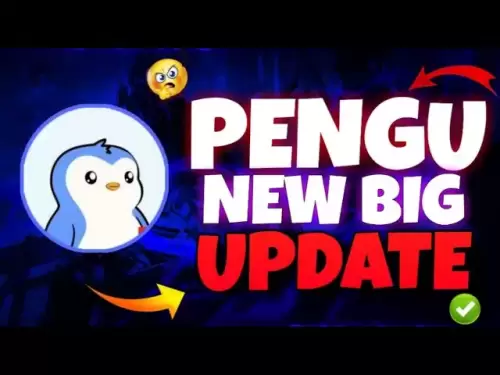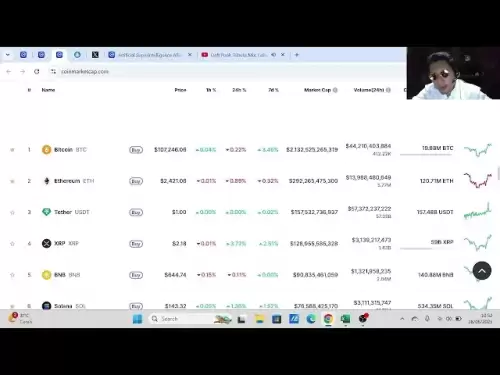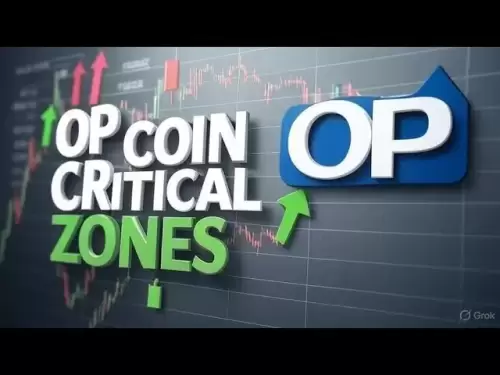-
 Bitcoin
Bitcoin $107,352.1067
0.28% -
 Ethereum
Ethereum $2,429.3531
-0.90% -
 Tether USDt
Tether USDt $1.0001
-0.02% -
 XRP
XRP $2.1894
4.62% -
 BNB
BNB $646.7968
0.36% -
 Solana
Solana $147.4290
4.03% -
 USDC
USDC $0.9998
-0.02% -
 TRON
TRON $0.2756
1.52% -
 Dogecoin
Dogecoin $0.1630
1.14% -
 Cardano
Cardano $0.5612
1.18% -
 Hyperliquid
Hyperliquid $37.0580
-0.05% -
 Bitcoin Cash
Bitcoin Cash $496.9410
-0.09% -
 Sui
Sui $2.7318
3.19% -
 Chainlink
Chainlink $13.1503
0.58% -
 UNUS SED LEO
UNUS SED LEO $9.0766
0.55% -
 Avalanche
Avalanche $17.7220
1.46% -
 Stellar
Stellar $0.2380
1.52% -
 Toncoin
Toncoin $2.8439
0.38% -
 Shiba Inu
Shiba Inu $0.0...01143
1.84% -
 Litecoin
Litecoin $85.8053
1.47% -
 Hedera
Hedera $0.1483
2.70% -
 Monero
Monero $314.3240
2.12% -
 Bitget Token
Bitget Token $4.6725
0.77% -
 Dai
Dai $1.0000
0.00% -
 Polkadot
Polkadot $3.3555
1.28% -
 Ethena USDe
Ethena USDe $1.0001
0.02% -
 Uniswap
Uniswap $7.0890
2.64% -
 Pi
Pi $0.5355
-3.40% -
 Pepe
Pepe $0.0...09393
1.06% -
 Aave
Aave $256.8136
-1.90%
Where can I find the lowest fee trading platform for USDT?
Researching USDT trading platforms is key; fees vary by volume, order type, payment method, and location. Always check current fee schedules on exchange websites.
Mar 31, 2025 at 05:43 pm
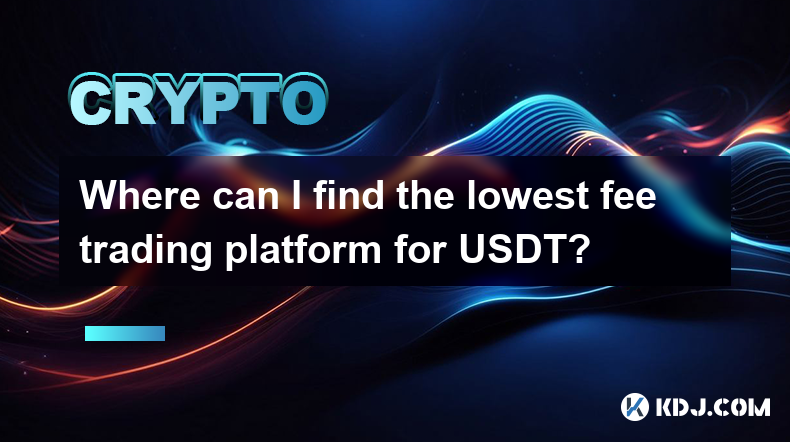
Finding the lowest fee trading platform for Tether (USDT) requires careful research, as fees can vary significantly depending on several factors. There isn't one single "lowest" platform universally applicable to everyone, as the best option depends on your trading volume, preferred exchange features, and geographic location. This article explores various aspects to help you find a suitable platform.
Understanding USDT Trading Fees
Trading fees are a crucial factor when choosing a platform. These fees are typically charged as a percentage of the transaction value or as a flat fee per trade. Some platforms also charge withdrawal fees, which are separate from trading fees. It's essential to understand the fee structure before committing to a platform. Always check the fee schedule on the exchange's website. Hidden fees or unexpected charges can significantly impact your profitability.
Factors Influencing USDT Trading Fees
Several factors influence the fees you'll pay when trading USDT. Trading volume often impacts fees, with many exchanges offering tiered fee structures where higher trading volumes result in lower fees per trade. The type of order also matters; limit orders (placing an order at a specific price) usually have lower fees than market orders (buying or selling at the current market price). Payment method can also influence fees; using certain payment gateways might incur additional charges. Finally, geographic location plays a role, as regulatory requirements and local market conditions can influence fee structures.
Popular Exchanges and Their Fee Structures (Illustrative Examples)
It's impossible to definitively say which exchange has the absolute lowest fees at any given time, as fees fluctuate. However, we can explore some popular platforms and their general fee structures. Remember to check their current fee schedules independently before making any decisions.
Binance: Binance is known for its generally low trading fees, particularly for high-volume traders. Their fee structure is tiered, meaning fees decrease as your trading volume increases. They also offer a VIP program with even lower fees for high-volume users. However, withdrawal fees can vary depending on the cryptocurrency and the network used.
Kraken: Kraken is another popular exchange with competitive fees. They also offer a tiered fee structure, rewarding higher trading volumes with lower fees. Their fee schedule is transparent and readily available on their website. Like Binance, withdrawal fees are dependent on the cryptocurrency and network.
KuCoin: KuCoin is a cryptocurrency exchange that offers a variety of trading pairs, including USDT pairs. They also have a tiered fee structure, and their fees are generally competitive. Check their website for the most up-to-date information on fees and fee reductions.
OKX: OKX is a large exchange offering a range of trading options. They also operate on a tiered fee structure, meaning that higher trading volume translates to lower fees. Withdrawal fees can vary.
Huobi Global: Huobi Global is another established exchange with a large user base. Their fee structure is often competitive, though it's crucial to verify their current fees on their platform before trading.
It is crucial to understand that these are just examples, and fees are subject to change. Always confirm the current fee structure on the exchange's official website.
Beyond Trading Fees: Other Important Considerations
While low fees are important, they shouldn't be the sole deciding factor. Consider these aspects:
Security: Choose a platform with a strong security track record and robust security measures to protect your assets.
Liquidity: High liquidity ensures you can easily buy and sell USDT without significant price slippage.
User Interface: A user-friendly interface is essential for a smooth trading experience.
Customer Support: Reliable customer support is crucial in case you encounter any issues.
Regulatory Compliance: Ensure the exchange is compliant with relevant regulations in your jurisdiction.
Remember to thoroughly research each platform before depositing any funds.
Frequently Asked Questions
Q: Are there any fee-free USDT trading platforms?
A: While some platforms might advertise extremely low fees, completely fee-free trading is rare in the cryptocurrency space. Most platforms need to generate revenue to cover operational costs. "Low fees" often refer to competitive fee structures compared to other exchanges.
Q: How do I find the most up-to-date fee information?
A: Always check the official website of the exchange you are considering. Look for a section dedicated to "fees," "pricing," or "fee schedule." The information there will be the most current and accurate.
Q: Do fees vary depending on the cryptocurrency pair?
A: While the focus is on USDT, fees can vary slightly even within the same exchange, depending on the specific cryptocurrency pair you're trading. For example, trading USDT/BTC might have a slightly different fee than trading USDT/ETH.
Q: Can I negotiate trading fees with an exchange?
A: Generally, you cannot negotiate individual trading fees. However, many exchanges offer tiered fee structures, where your fees decrease automatically as your trading volume increases. Some exchanges also have VIP programs with reduced fees for high-volume traders.
Q: Are there any hidden fees I should be aware of?
A: Be wary of hidden fees. Always carefully review the complete fee schedule before using a platform. Hidden fees might be associated with deposits, withdrawals, or specific order types. Transparency in fee disclosure is a key factor to consider.
Q: What if I encounter a problem with fees charged by an exchange?
A: If you believe you've been incorrectly charged fees, contact the exchange's customer support immediately. Provide them with details of the transaction and the discrepancy. Keep records of all your transactions and communications with the exchange.
Disclaimer:info@kdj.com
The information provided is not trading advice. kdj.com does not assume any responsibility for any investments made based on the information provided in this article. Cryptocurrencies are highly volatile and it is highly recommended that you invest with caution after thorough research!
If you believe that the content used on this website infringes your copyright, please contact us immediately (info@kdj.com) and we will delete it promptly.
- Crypto's First Principles: Are Returns Still Rooted in Fairness?
- 2025-06-28 22:30:12
- Kaspa (KAS) Price Prediction 2025: Will It Hit $1?
- 2025-06-28 22:50:12
- A16Z Dumps $COMP on Coinbase: Liquidation or Rebalancing?
- 2025-06-28 22:30:12
- KraneShares, Coinbase, and Digital Assets: A New Era for Institutional Crypto?
- 2025-06-28 23:07:14
- Bitcoin Solaris: Mobile Mining Revolution & Beyond!
- 2025-06-28 22:35:13
- Bitcoin, Post-Dollar, and US Preparation: A New Digital Gold Standard?
- 2025-06-28 22:52:13
Related knowledge
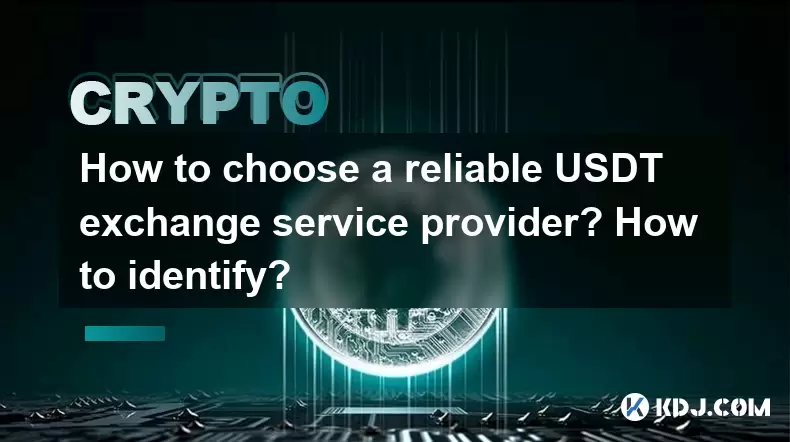
How to choose a reliable USDT exchange service provider? How to identify?
Jun 12,2025 at 03:15pm
Understanding the Role of USDT in Cryptocurrency TradingUSDT (Tether) is one of the most widely used stablecoins in the cryptocurrency market. It is designed to maintain a 1:1 peg with the U.S. dollar, offering traders and investors a way to hedge against volatility while remaining within the crypto ecosystem. Choosing a reliable USDT exchange service p...
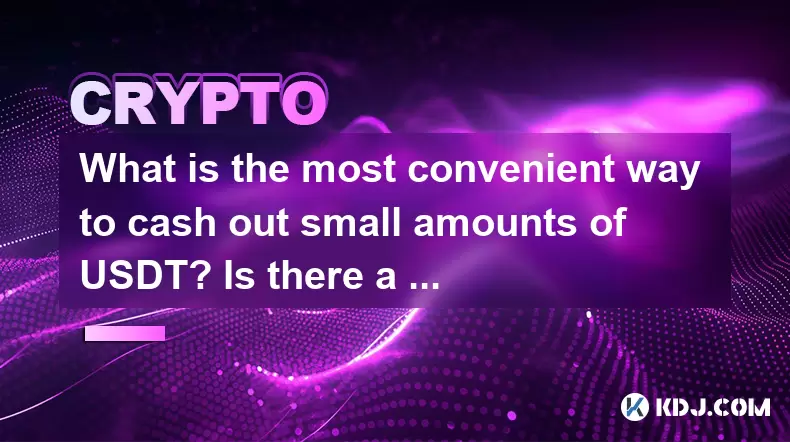
What is the most convenient way to cash out small amounts of USDT? Is there a shortcut?
Jun 11,2025 at 11:00pm
Understanding the Need to Cash Out Small USDT AmountsCashing out small amounts of USDT can be a challenge for many crypto users. Traditional methods often involve high fees, minimum withdrawal limits, or cumbersome verification processes that make it inefficient for small transactions. The key is to find a method that balances speed, cost, and convenien...
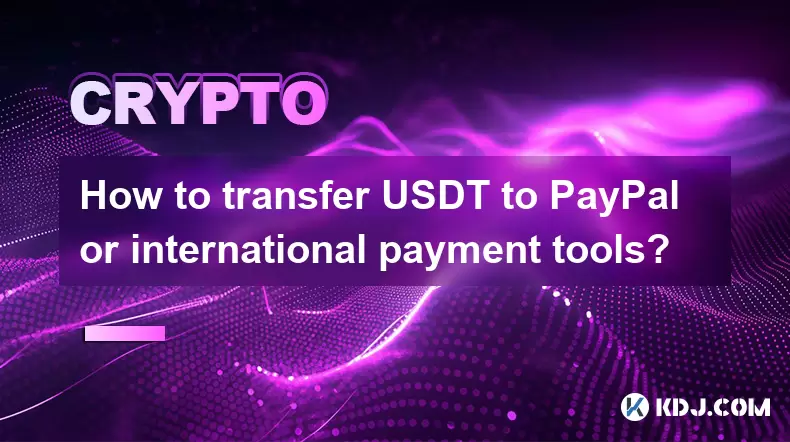
How to transfer USDT to PayPal or international payment tools?
Jun 15,2025 at 05:28am
Understanding the Basics of USDT and PayPal IntegrationUSDT (Tether) is a stablecoin pegged to the US dollar, offering blockchain-based value transfer with minimal volatility. PayPal, on the other hand, is a centralized digital wallet that facilitates fiat currency transactions globally. Direct integration between USDT and PayPal does not exist due to t...
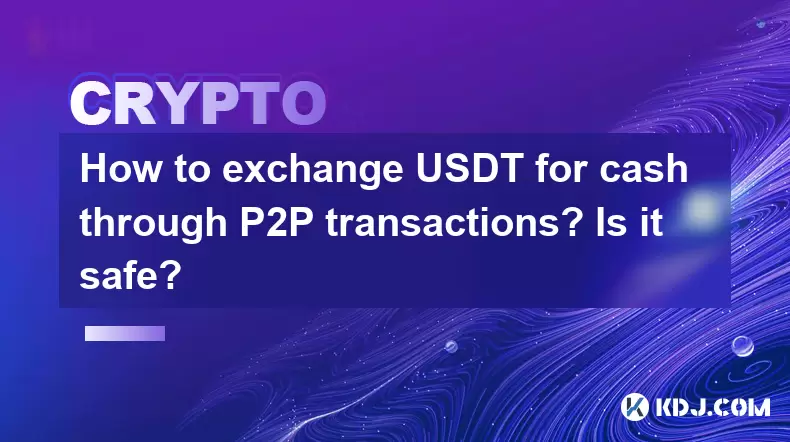
How to exchange USDT for cash through P2P transactions? Is it safe?
Jun 18,2025 at 07:56am
Understanding USDT and P2P TransactionsTether (USDT) is a stablecoin pegged to the value of the US dollar, making it a popular choice for users who want to avoid the volatility of other cryptocurrencies while still participating in the crypto ecosystem. Peer-to-peer (P2P) transactions allow individuals to trade directly with each other without going thr...
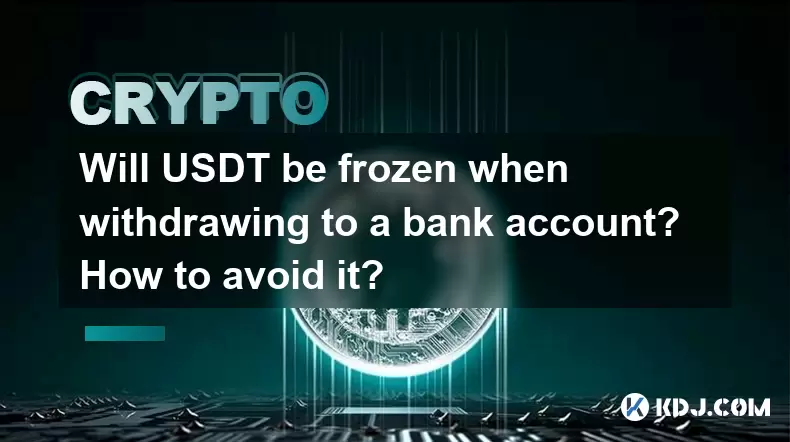
Will USDT be frozen when withdrawing to a bank account? How to avoid it?
Jun 15,2025 at 10:03am
Understanding USDT Withdrawals and Bank Account Freezing RisksWhen users decide to withdraw USDT (Tether) to a bank account, one of the most common concerns is whether their funds will be frozen during the process. This concern stems from real-life cases where individuals have encountered delays or restrictions when converting digital assets into fiat c...
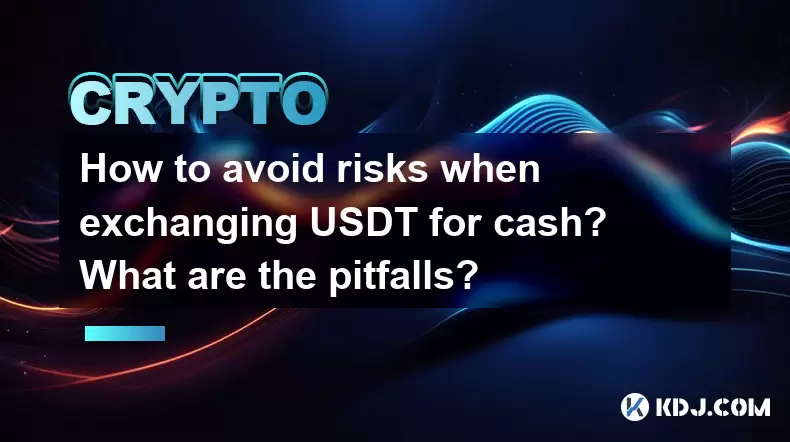
How to avoid risks when exchanging USDT for cash? What are the pitfalls?
Jun 11,2025 at 08:14pm
Understanding the Risks of Exchanging USDT for CashWhen exchanging USDT (Tether) for cash, users must be aware of the potential risks involved. As a stablecoin pegged to the US dollar, USDT is widely used in crypto transactions due to its price stability. However, converting it into fiat currency like USD or CNY can expose users to several pitfalls, inc...

How to choose a reliable USDT exchange service provider? How to identify?
Jun 12,2025 at 03:15pm
Understanding the Role of USDT in Cryptocurrency TradingUSDT (Tether) is one of the most widely used stablecoins in the cryptocurrency market. It is designed to maintain a 1:1 peg with the U.S. dollar, offering traders and investors a way to hedge against volatility while remaining within the crypto ecosystem. Choosing a reliable USDT exchange service p...

What is the most convenient way to cash out small amounts of USDT? Is there a shortcut?
Jun 11,2025 at 11:00pm
Understanding the Need to Cash Out Small USDT AmountsCashing out small amounts of USDT can be a challenge for many crypto users. Traditional methods often involve high fees, minimum withdrawal limits, or cumbersome verification processes that make it inefficient for small transactions. The key is to find a method that balances speed, cost, and convenien...

How to transfer USDT to PayPal or international payment tools?
Jun 15,2025 at 05:28am
Understanding the Basics of USDT and PayPal IntegrationUSDT (Tether) is a stablecoin pegged to the US dollar, offering blockchain-based value transfer with minimal volatility. PayPal, on the other hand, is a centralized digital wallet that facilitates fiat currency transactions globally. Direct integration between USDT and PayPal does not exist due to t...

How to exchange USDT for cash through P2P transactions? Is it safe?
Jun 18,2025 at 07:56am
Understanding USDT and P2P TransactionsTether (USDT) is a stablecoin pegged to the value of the US dollar, making it a popular choice for users who want to avoid the volatility of other cryptocurrencies while still participating in the crypto ecosystem. Peer-to-peer (P2P) transactions allow individuals to trade directly with each other without going thr...

Will USDT be frozen when withdrawing to a bank account? How to avoid it?
Jun 15,2025 at 10:03am
Understanding USDT Withdrawals and Bank Account Freezing RisksWhen users decide to withdraw USDT (Tether) to a bank account, one of the most common concerns is whether their funds will be frozen during the process. This concern stems from real-life cases where individuals have encountered delays or restrictions when converting digital assets into fiat c...

How to avoid risks when exchanging USDT for cash? What are the pitfalls?
Jun 11,2025 at 08:14pm
Understanding the Risks of Exchanging USDT for CashWhen exchanging USDT (Tether) for cash, users must be aware of the potential risks involved. As a stablecoin pegged to the US dollar, USDT is widely used in crypto transactions due to its price stability. However, converting it into fiat currency like USD or CNY can expose users to several pitfalls, inc...
See all articles






















